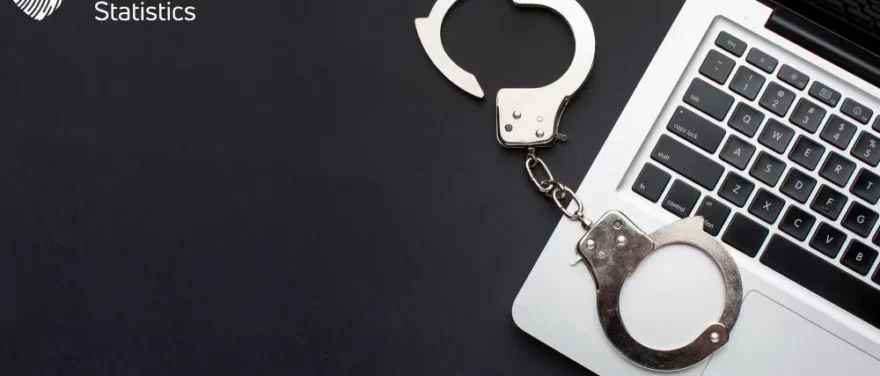
At first glance, the idea of applying criminal profiling tests to the cyber landscape might seem like an odd pairing. After all, we’re not dealing with physical crime scenes and fingerprints but with lines of code and elusive hackers. However, the common thread lies in understanding the human element behind the screen—the motivations, behaviours, and patterns that drive cybercriminals to breach our digital fortresses.
Understanding Criminal Profiling: A Brief Insight

Criminal profiling, often depicted glamorously in crime dramas, is a sophisticated art interweaving psychology, criminology, and investigative techniques. At its core, it’s a systematic analysis aimed at discerning behavioural patterns, motivations, and potential characteristics of an unknown offender based on evidence found at the crime scene.
Initially, criminal profiling tests emerged as a specialised tool in solving violent crimes. Over time, this investigative approach has evolved, finding applications in diverse areas, from traditional homicide investigations to modern cybercrimes. The primary objective remains consistent: to decode the behavioural blueprint of perpetrators.
These tests are not crystal balls but are meticulously constructed upon empirical data, behavioural analysis, and psychological theories. They involve assessing crime scenes, victimology, and studying behavioral patterns to create a profile that aids law enforcement agencies in narrowing down suspects or understanding criminal modus operandi.
Navigating the Myths About Criminal Profiling Tests
While popular media often portrays criminal profiling tests as infallible, they are far from being foolproof. Their effectiveness hinges on a delicate balance of science, experience, and a critical understanding of human behaviour. Acknowledging their limitations is as crucial as appreciating their potential impact. Here are some prevalent misconceptions:
- Infallibility: One of the most significant misconceptions is that criminal profiling tests are foolproof. In reality, profiling is a complex process with inherent limitations, and it doesn’t provide definitive answers. Profilers work with probabilities and tendencies, not certainties.
- Psychic Abilities: Some people believe that criminal profilers possess almost psychic abilities to read minds and foresee intricate details about the offender. In truth, profiling is a scientific and methodical approach that relies on data analysis, psychology, and criminology.
- Sole Reliance on Profiling: Another misconception is that criminal investigations can be solely based on profiling results. Profiling is just one tool in a broader investigative toolkit. It should be used in conjunction with other evidence and investigative methods for a comprehensive approach.
- Homogeneity of Profilers: There’s a common belief that all criminal profilers fit a specific mould, similar to the characters portrayed in movies and TV shows. In reality, profilers come from diverse professional backgrounds, and their approaches may vary. There is no one-size-fits-all method in criminal profiling.
- Instantaneous Results: Media often portrays profilers as individuals who can quickly produce accurate profiles, leading to the swift apprehension of suspects. In reality, the process is time-consuming, and the development of a reliable profile requires careful analysis and consideration.
- Limited to Violent Crimes: Many people associate criminal profiling exclusively with violent crimes, such as homicides. While profiling has historically been linked to such cases, its applications have expanded to various types of crimes, including white-collar crimes and cybercrimes.
- Profile Equals Identity: There’s a misconception that a criminal profile equates to a specific individual. In truth, a profile is a collection of characteristics and behavioural traits that might match multiple people. It’s a tool for narrowing down potential suspects, not a direct identification.
- Lack of Scientific Basis: Some sceptics believe that criminal profiling lacks a solid scientific foundation. While it’s true that profiling is not an exact science, it is based on empirical data, psychological theories, and ongoing research. Profilers undergo extensive training to refine their skills.
Types of Criminal Profiling Tests
Criminal profiling employs a multifaceted approach, encompassing various types of tests to unravel the intricate motives and behaviours of offenders.
- Psychopathy tests are used to identify individuals who exhibit psychopathic traits. These tests are designed to measure personality traits such as impulsivity, lack of empathy, and a tendency to manipulate others. They are often used in conjunction with other profiling techniques to create a more complete picture of a criminal’s behaviour.
- Behavioural analysis is another type of criminal profiling test that is used to identify patterns in a criminal’s behaviour. This technique involves analysing a criminal’s actions and looking for patterns that can help investigators identify the offender. Behavioral analysis can be used to identify the offender’s age, gender, and other characteristics.
- Signature analysis is a technique that is used to identify the unique characteristics of a criminal’s behaviour. This technique involves analyzing the way a criminal commits a crime and looking for patterns that can help investigators identify the offender. Signature analysis can be used to identify the offender’s motivation, personality, and other characteristics.
- Crime scene analysis is a technique that is used to analyse the physical evidence left at a crime scene. This technique involves analysing the location of the crime, the type of weapon used, and other physical evidence to identify patterns that can help investigators identify the offender. Crime scene analysis can be used to identify the offender’s age, gender, and other characteristics.
How Does That Serve the Cybersecurity Field?
In the field of cybersecurity, profiling techniques are used to identify the characteristics of cybercriminals and to help investigators track them down. For example, psychopathy tests can be used to identify individuals who exhibit psychopathic traits and are more likely to engage in cybercrime.
Behavioural analysis is another technique that is used to identify patterns in a cybercriminal’s behaviour and can help investigators identify the offender’s age, gender, and other characteristics. Signature analysis is also used to identify the unique characteristics of a cybercriminal’s behaviour, such as their motivation and personality. Finally, crime scene analysis can be used to analyse the physical evidence left at a cybercrime scene and identify patterns that can help investigators identify the offender.
By using these profiling techniques, cybersecurity professionals can identify patterns in cybercriminal behaviour and use this information to prevent future cyberattacks and bring cybercriminals to justice.
The Interplay of Psychology and Cybersecurity

The Achilles’ heel of cybersecurity often lies in the human tendency to trust. Social engineering attacks exploit this vulnerability, manipulating individuals into divulging sensitive information or performing actions that compromise security. Whether through phishing emails, pretexting, or impersonation, cybercriminals leverage psychological tactics to exploit human trust, highlighting the critical need for awareness and education in the fight against such attacks.
The very individuals trusted with organisational secrets can pose a significant threat. Insider threats, whether intentional or unintentional, can result in data breaches or compromise sensitive information. Understanding the psychological dynamics behind insider threats, such as disgruntlement, greed, or inadvertent negligence, is crucial for organisations to implement effective preventive measures and foster a security-aware culture among employees.
Profiling Cybercriminals
Examining the psychology of cybercriminals unveils a diverse spectrum of traits. Some are driven by financial gain, while others may be motivated by ideological beliefs or even personal vendettas. Understanding these psychological profiles aids in anticipating and countering cyber threats effectively. Traits such as high intelligence, adaptability, and a propensity for risk-taking are commonly associated with cyber criminals, forming the basis for profiling strategies.
Delving deeper, motivations behind cybercrimes vary widely. From hacktivism and cyberespionage to financial fraud and data theft, cybercriminals are often motivated by a complex interplay of factors. Profilers analyse these motivations to anticipate the next move, helping cybersecurity experts stay one step ahead in the ongoing cat-and-mouse game of the digital realm.
Incorporating Criminal Profiling in Cybersecurity
Criminal profiling techniques find a natural extension in the realm of cybersecurity through behavioural analytics. By analysing patterns of user behaviour, anomalies can be detected, potentially indicating a security threat. Understanding normal behaviour paves the way for identifying deviations that may signify malicious activity, enabling organisations to respond promptly and effectively.
User behaviour monitoring plays a pivotal role in strengthening cybersecurity defences. By continuously monitoring user actions, organisations can identify suspicious activities, detect unauthorised access, and prevent potential security breaches. This proactive approach relies on profiling the usual behaviour of individuals within the system, allowing for the swift identification of deviations that may signify a security incident.
Incorporating threat intelligence into cybersecurity measures involves creating profiles of potential threats based on real-time data and historical trends. Profiling the tactics, techniques, and procedures (TTPs) of cybercriminals enhances the ability to predict and respond to emerging threats effectively. By staying ahead of evolving attack methods, organisations can fortify their defences and minimise the impact of cyber threats.
Challenges and Ethical Considerations in Criminal Profiling Tests
Criminal profiling tests, while invaluable tools in investigative and cybersecurity efforts, are not without their challenges and ethical considerations.
A. Limitations of Criminal Profiling Tests: It’s crucial to acknowledge the inherent limitations of these tests. Profiling, by nature, deals with probabilities rather than certainties. The risk of false positives, where an innocent individual may be wrongly implicated, underscores the need for caution and a recognition that profiling is just one aspect of a broader investigative approach.
B. Ethical Concerns in Profiling for Cybersecurity: In the realm of cybersecurity, ethical considerations are paramount. Profiling individuals based on their online behaviour raises concerns about privacy and the potential misuse of personal data. Striking a balance between identifying potential threats and respecting individuals’ right to privacy becomes a delicate task. The ethical dilemma is accentuated when profiling involves collecting and analysing large volumes of data, potentially infringing on civil liberties.
C. Balancing Security and Privacy: The perpetual challenge lies in finding the equilibrium between enhancing security measures and upholding individual privacy rights. Implementing robust cybersecurity measures often involves extensive data collection and analysis, raising ethical questions about the extent to which individuals are monitored without their explicit consent.
Striking a balance that safeguards against cyber threats while respecting privacy is an ongoing challenge that requires careful consideration, transparent policies, and regulatory frameworks that prioritise both security and individual rights.
Navigating the intricate landscape of criminal profiling tests demands a constant reassessment of methodologies and a commitment to ethical principles. As technology advances and profiling techniques evolve, addressing these challenges becomes pivotal to ensuring that the use of such tests aligns with ethical standards and respects the rights and dignity of individuals.
